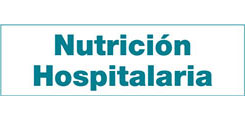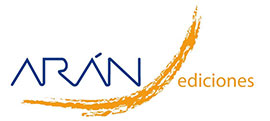Trabajo Original
Exploration of three different nutritional scores in predicting postoperative complications after pancreaticoduodenectomy
Ke Cong, Gu Chunwei
 Número de descargas:
22167
Número de descargas:
22167
 Número de visitas:
6471
Número de visitas:
6471
 Citas:
4
Citas:
4
Compártelo:
Objectives: we used the Controlling Nutritional Status score (CONUT), Geriatric Nutritional Risk Index (GNRI), and Prognostic Nutritional Index (PNI) to explore three different nutritional scores in predicting postoperative complications after pancreaticoduodenectomy (PD). Methods: data were retrospectively reviewed from 113 patients who underwent PD to treat pancreatic cancer and periampullary neoplasms at the Second Affiliated Hospital of Soochow University between 2015 and 2020. Nutritional status was assessed by the CONUT, GNRI, and PNI scores, and patients were categorized as either at risk or not at risk for malnutrition by each score. Postoperative complications were defined according to the Clavien-Dindo classification. Data were analyzed using Fisher’s exact probability method and multivariate logistic regression analysis. The relationships between the three nutritional scoring systems and postoperative complications were examined. Results: CONUT, GNRI and PNI scores were closely related to the occurrence of postoperative complications. CONUT (OR = 0.92, 95 % CI, 0.75-1.12, p = 0.043), GNRI (OR = 0.98, 95 % CI, 0.93-1.02, p = 0.036), PNI (OR = 0.96, 95 % CI, 0.89-1.03, p = 0.024), and operation periods (OR = 1.01, 95 % CI, 0.99-1.02, p = 0.034) were independent risk factors for complications in patients after PD. The predictive value of the three nutritional screening methods for overall complications in patients with PD had a sensitivity of 31.8 %, 56.06 % and 74.24 %, a specificity of 85.10 %, 68.08 % and 76.81 %, a Youden index of 0.17, 0.24 and 0.71, and a kappa value of 0.460, 0.389 and 0.472, respectively. The predictive value of the three nutritional screening methods in predicting the severity of complications in patients with PD had a sensitivity of 82.11 %, 58.95 % and 65.26 %, a specificity of 38.89 %, 55.56 % and 66.67 %, a Youden index of 0.21, 0.15 and 0.36, and a kappa value of 0.664, 0.416 and 0.645, respectively. Among the three nutrition scoring systems, PNI score had better diagnostic efficiency (0.660 area under the AUC curve), higher specificity (66.67 %), and was consistent with postoperative complications (KCONUT = 0.664, KGNRI = 0.416, KPNI = 0.645) when compared to the GNRI and CONUT scores. Conclusions: CONUT, GNRI and PNI scores, especially PNI score, have good predictive values for the occurrence and severity of postoperative complications in PD patients, and should be used as preoperative nutritional risk screening tools for PD patients.
Palabras Clave: Pancreatoduodenectomy. Postoperative complications. Nutritional risk assessment.
Artículos Relacionados:
Trabajo Original: Evaluación del riesgo nutricional de los adolescentes escolarizados en Cantabria
Trabajo Original: Association between nutritional risk status and both diaphragmatic dysfunction and diaphragm atrophy in medical ıntensive care unit patients
Kamil Inci , Eda Macit Aydın , Gulbin Aygencel , Melda Türkoğlu
Trabajo Original: Evaluación del riesgo nutricional por STAMP de acuerdo con el tipo de cardiopatía congénita en pacientes pediátricos admitidos en un hospital de referencia
José de Jesús Vargas Lares , Lisset del Carmen López Segovia , Jonathan Antonio Casillas Moreno , Juan Carlos Barrera de León
Trabajo Original: Influence of nutritional risk assessment on the prognosis of trauma patients
Fei Li , Haiyang Guan , Ying Liu
Trabajo Original: Influence of handgrip strength on postoperative complications and survival in primary liver cancer patients
Chunlei Li , Yajun Chen , Hongmei Wu , Yaqi Zeng , Yueying Li , Jie Dong , Yujie Wang , Tianqiang Song
Artículos más populares
Revisión: Inteligencia artificial generativa ChatGPT en nutrición clínica: avances y desafíos
ChatGPT y otras herramientas de inteligencia artif...
Revisión: Suplementación con micronutrientes y sus beneficios: ¿por qué y cuándo?
Introducción: los micronutrientes participan en la...
-
Licencia creative commons: Open Access bajo la licencia Creative Commons 4.0 CC BY-NC-SA
https://creativecommons.org/licenses/by-nc-sa/4.0/legalcode




